Reversal of the T cell immune system reveals the molecular basis for T cell lineage fate determination in the thymus
- PMID: 35523960
- PMCID: PMC9098387
- DOI: 10.1038/s41590-022-01187-1
Reversal of the T cell immune system reveals the molecular basis for T cell lineage fate determination in the thymus
Abstract
T cell specificity and function are linked during development, as MHC-II-specific TCR signals generate CD4 helper T cells and MHC-I-specific TCR signals generate CD8 cytotoxic T cells, but the basis remains uncertain. We now report that switching coreceptor proteins encoded by Cd4 and Cd8 gene loci functionally reverses the T cell immune system, generating CD4 cytotoxic and CD8 helper T cells. Such functional reversal reveals that coreceptor proteins promote the helper-lineage fate when encoded by Cd4, but promote the cytotoxic-lineage fate when encoded in Cd8-regardless of the coreceptor proteins each locus encodes. Thus, T cell lineage fate is determined by cis-regulatory elements in coreceptor gene loci and is not determined by the coreceptor proteins they encode, invalidating coreceptor signal strength as the basis of lineage fate determination. Moreover, we consider that evolution selected the particular coreceptor proteins that Cd4 and Cd8 gene loci encode to avoid generating functionally reversed T cells because they fail to promote protective immunity against environmental pathogens.
© 2022. This is a U.S. government work and not under copyright protection in the U.S.; foreign copyright protection may apply.
Conflict of interest statement
The authors declare no competing interests.
Figures

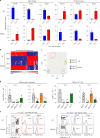
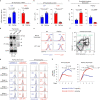



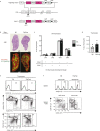



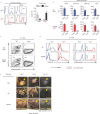
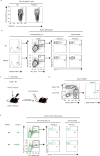

Comment in
-
Signal length not strength guides T cell fate.Nat Rev Immunol. 2022 Jul;22(7):407. doi: 10.1038/s41577-022-00736-x. Nat Rev Immunol. 2022. PMID: 35577929 No abstract available.
-
FlipFlop of the T cell immune system.Nat Methods. 2022 Jul;19(7):781. doi: 10.1038/s41592-022-01555-7. Nat Methods. 2022. PMID: 35804242 No abstract available.
Similar articles
-
Modulation of coreceptor transcription during positive selection dictates lineage fate independently of TCR/coreceptor specificity.Immunity. 2005 Jul;23(1):75-87. doi: 10.1016/j.immuni.2005.05.011. Immunity. 2005. PMID: 16039581
-
Coreceptor gene imprinting governs thymocyte lineage fate.EMBO J. 2012 Jan 18;31(2):366-77. doi: 10.1038/emboj.2011.388. Epub 2011 Oct 28. EMBO J. 2012. PMID: 22036949 Free PMC article.
-
The zinc-finger protein MAZR is part of the transcription factor network that controls the CD4 versus CD8 lineage fate of double-positive thymocytes.Nat Immunol. 2010 May;11(5):442-8. doi: 10.1038/ni.1860. Epub 2010 Apr 11. Nat Immunol. 2010. PMID: 20383150 Free PMC article.
-
Transcriptional control of CD4 and CD8 coreceptor expression during T cell development.Cell Mol Life Sci. 2013 Dec;70(23):4537-53. doi: 10.1007/s00018-013-1393-2. Epub 2013 Jun 21. Cell Mol Life Sci. 2013. PMID: 23793512 Free PMC article. Review.
-
The regulation and function of the CD4 coreceptor during T lymphocyte development.Curr Top Microbiol Immunol. 1996;205:89-106. doi: 10.1007/978-3-642-79798-9_5. Curr Top Microbiol Immunol. 1996. PMID: 8575199 Review.
Cited by
-
A guide to thymic selection of T cells.Nat Rev Immunol. 2024 Feb;24(2):103-117. doi: 10.1038/s41577-023-00911-8. Epub 2023 Jul 18. Nat Rev Immunol. 2024. PMID: 37464188 Review.
-
How autoreactive thymocytes differentiate into regulatory versus effector CD4+ T cells after avoiding clonal deletion.Nat Immunol. 2023 Apr;24(4):637-651. doi: 10.1038/s41590-023-01469-2. Epub 2023 Mar 23. Nat Immunol. 2023. PMID: 36959291 Free PMC article.
-
Intrinsic factors and CD1d1 but not CD1d2 expression levels control invariant natural killer T cell subset differentiation.Nat Commun. 2023 Dec 1;14(1):7922. doi: 10.1038/s41467-023-43424-7. Nat Commun. 2023. PMID: 38040679 Free PMC article.
-
T Cell Development: From T-Lineage Specification to Intrathymic Maturation.Adv Exp Med Biol. 2025;1471:81-137. doi: 10.1007/978-3-031-77921-3_4. Adv Exp Med Biol. 2025. PMID: 40067585 Review.
-
Negative Regulation of Zap70 by Lck Forms the Mechanistic Basis of Differential Expression in CD4 and CD8 T Cells.Front Immunol. 2022 Jul 4;13:935367. doi: 10.3389/fimmu.2022.935367. eCollection 2022. Front Immunol. 2022. PMID: 35860252 Free PMC article.
References
Publication types
MeSH terms
Substances
Grants and funding
LinkOut - more resources
Full Text Sources
Other Literature Sources
Molecular Biology Databases
Research Materials

